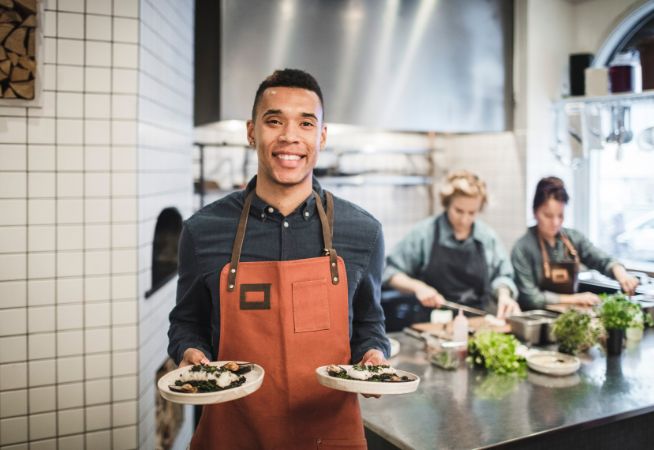September 20, 2023
3 Min. Read

The inaugural QSR Evolution Conference was unlike any other restaurant industry event. The conference was attended by senior executives from some of the world’s largest and most successful quick-service restaurants, including Papa John’s, Chick-fil-A, Wingstop, Coca-Cola, Tropical Smoothie Cafe, Taco Bell, and many more. Conference highlights included speaker panels and presentations about technology, innovation, brand power, and more, featuring experts from around the industry.
We had the opportunity to listen in on several of these expert-led discussions and noticed a few essential themes echoed throughout the conference. Here are three key ideas we heard at QSR Evolution shaping the restaurant industry and driving innovation.
The Importance of Talent Development
Employees are the backbone of any successful business, and competition for talent in the quick-service restaurant industry is fierce. With so many well-known brands across the space, as well as an ongoing labor shortage, employees often have the upper hand as they can easily move onto a new role if their current one is dissatisfying.
To attract and retain employees, many restaurants strive to be known as one of the “best places to work” by focusing on diversity and inclusion, offering learning opportunities for professional development, and providing clear pathways to career advancement. By creating positive, inclusive, and supportive work environments, restaurants aim to attract, retain, and motivate talent while enhancing their overall reputation in the industry.
A strong partnership with a learning technology provider is critical to successful talent development within the restaurant industry. Many top companies and brands rely on a learning platform to deliver training to different groups of new hires, offer continuous learning throughout the employee lifecycle, and connect learning to performance to develop promising employees and equip them with the skills needed to lead the organization.
The Power of Technology
Quick-service restaurants recognize the power of technology to transform operations and drive business growth. The most successful brands strategically implement the right technology to maximize efficiency on the frontlines and optimize the guest experience.
In response to the COVID-19 pandemic, many QSRs and fast-casual chains introduced contactless dining options such as QR code menus and mobile ordering to enhance safety for customers and staff. Many chains are also integrated with third-party services like GrubHub, UberEats, and DoorDash to facilitate online ordering and delivery. Digital wallets and rewards programs are also common among these businesses, through which customers earn points or discounts for frequent visits or purchases.
From digital ordering systems that allow customers to place orders through self-service kiosks to mobile apps that encourage customer engagement and loyalty, restaurants will continue to innovate and integrate new tools to remain competitive and meet evolving consumer demands.
The Rise of Fast-Casual Restaurants
Today’s consumers want fast service that doesn’t skimp on quality and are willing to pay a premium for better ingredients and trendy, modern atmospheres.
The concept of fast food restaurants dates back to the post-World War II era. Many QSRs offer value meals, dollar menus, and combo deals, making them an affordable dining option for a wide range of consumers. QSRs are known for their consistency in menu items and quality—this standardization helped build trust among consumers, who knew what to expect regardless of which location they visited.
Over the years, however, consumer preferences have changed. Many people today are more concerned about nutrition and ingredient sourcing than speed and convenience when selecting a restaurant. While traditional fast food restaurants have continually evolved their menus to cater to changing consumer preferences, that hasn’t stopped the rise of modern competitors who emphasize fresh, locally sourced, high-quality ingredients.
While fast-casual dining is generally more expensive than QSRs, it is still more affordable than full-service restaurants, and customers are willing to pay a bit more for the improved food quality and experience. Chipotle Mexican Grill, Panera Bread, and Five Guys are a few examples of well-known fast-casual chains, and they’re projected to continue growing in the coming years.
We had a great time learning about all the innovations underway in the restaurant industry at the QSR Evolution Conference, and we look forward to attending again next year. Until then, keep an eye on our blog for more insights.



